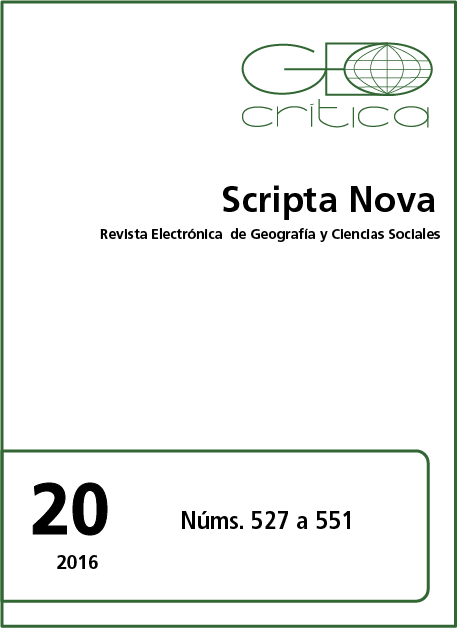539. The urbanization process in Spain (1990-2014). Interpretations from the Geography and from the theory of capital circuits
DOI:
https://doi.org/10.1344/sn2016.20.16793Keywords:
urban sprawl, metropolitan areas, polycentric urban system, circuit of capital, SpainAbstract
For several decades, the Geography has demonstrated a special interest for the process of urbanization and the study of the urban systems that are result of it. In fact, in Spain numerous the authors insisted that there has been generated a metropolitan complex reality, where the classic city and its wide peripheries define the keys of the organization of the space of the country. This process has been the result, in the heart and in the form, of the capitalist dynamics of accumulation, which answer to the logics of the secondary circuit of accumulation, well characterized by K. Marx and geographers like D. Harvey. The result of an expansive and deregulated capitalism has been an acceleration without precedents of the urban expansion and of the dynamics of artificialización of the soil. In this contribution, the geographical and urban bibliography more important that has characterized boom developer and the real-estate bubble has been revised, the actors who have stimulated and have benefited from the same one, the results of the growth expressed in hundreds of thousands of new housings and luxurious infrastructures for the whole territory, and the conclusions that we must obtain of our analysis in order to do not repeat similar acts in the future, and to develop an urbanism destined to attend to the needs of the majority of the populationDownloads
Published
2016-07-01
Issue
Section
Articles
License
Los autores que publican en esta revista están de acuerdo con los siguientes términos:
- Los autores conservan los derechos de autoría y otorgan a la revista el derecho de primera publicación, cin la obra disponible simultáneamente bajo una Licéncia de Atribución Compartir igual de Creative Commons que permite compartir la obra con terceros, siempre que estos reconozcan la autoría y la publicación inicial en esta revista.
- Los autores son libres de realizar acuerdos contractuales adicionales independientes para la distribución no exclusiva de la versió de la obra publicada en la revista (com por ejemplo la publicación en un repositorio institucional o en un libro), siempre que se reconozca la publicación inicial en esta revista.





